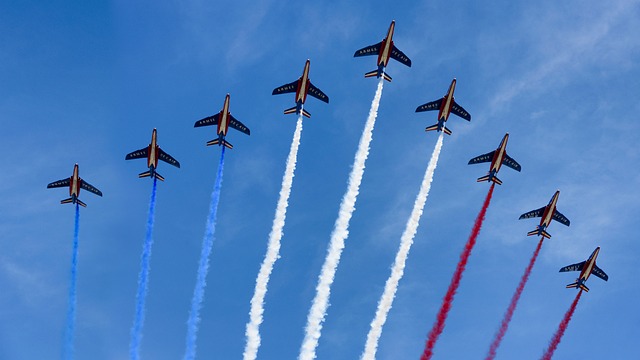Understanding proper US flag etiquette is essential, as it goes beyond symbolism, representing national pride and honoring past service members. Specific protocols exist for raising, lowering, and storing the flag, such as flying it at half-staff during mourning. Following these guidelines indoors demonstrates respect for its significance. Additionally, "Discovering Your Local US Flag Near Me" encourages readers to support local retailers displaying the flag, fostering patriotism and community spirit through accessible and meaningful connections with their surroundings.
“Unravel the art of flag etiquette with our comprehensive guide, offering a deep dive into the do’s and don’ts of displaying the US flag nearby. From understanding the symbolism embedded in its folds to navigating protocol with precision, this article is your ultimate reference. Learn to avoid common mistakes when handling this iconic symbol, ensuring respect and honor for our nation. Whether you’re inspired to display the US flag near you or simply curious about its history, this guide has you covered.”
- Understanding Flag Etiquette: A Comprehensive Guide
- Displaying the US Flag Near Me: Do's and Don'ts
- The History and Symbolism Behind Flag Protocol
- Common Mistakes to Avoid When Handling the US Flag
Understanding Flag Etiquette: A Comprehensive Guide

Understanding Flag etiquette is essential, especially when displaying or handling the United States flag near you. It’s more than just a symbol; it represents our nation and its values. Following proper protocol ensures respect and honor for this iconic symbol.
Whether you’re raising, lowering, or storing the flag, there are specific guidelines to follow. For instance, always ensure the flag is flown at a half-staff position during periods of national mourning. The US flag should also be respectfully illuminated; never display it in complete darkness. When hung indoors, it should be suspended so that its horizontal folds fall naturally. These simple practices demonstrate our appreciation for the flag’s significance and the sacrifices made by those who served our country.
Displaying the US Flag Near Me: Do's and Don'ts

When it comes to displaying the US Flag near you, there are specific guidelines to follow, ensuring proper respect and honor for this symbol of freedom. The ‘Do’s’ include flying the flag at full staff during appropriate times, such as national holidays or special celebrations, and ensuring it is properly illuminated when displayed after dark. Respectfully placing the flag on a pole or using a flag stand is also crucial to maintain its integrity.
On the other hand, there are several ‘Don’ts’ to consider. Avoid displaying the flag near your home or business if it’s damaged or frayed; it should be replaced. Never use the flag as a floor covering or for any decorative purpose that might degrade its dignity. Additionally, do not attach objects or decorations onto the flag, and ensure it is always flown at the appropriate height relative to other flags or buildings. Remember, these guidelines help preserve the US Flag’s historical significance and the values it represents.
The History and Symbolism Behind Flag Protocol

The history of flag etiquette is deeply intertwined with the evolution of nation-states and their symbols. Flags have long served as powerful representations of identity, unity, and pride for communities, states, and countries worldwide. The protocol surrounding flags, including how to display, respect, and retire them, has developed over centuries to reflect societal values and honor the significance of these ceremonial emblems.
In the United States, for instance, the flag (often referred to as “the Stars and Stripes” or “Old Glory”) holds immense historical and symbolic value. It was designed in 1777 by the Continental Congress, featuring 13 alternating red and white stripes representing the original colonies and a blue rectangle with 50 white stars, symbolizing the 50 states. The specific design has evolved over time to reflect changes in the nation’s boundaries and unity, making it a dynamic symbol of American heritage. Across the globe, many other countries have similar narratives—flags that have been through revolutions, wars, and political transformations, each leaving its mark on their respective symbolism. Understanding this rich history is essential when considering the appropriate protocol for displaying and respecting these powerful symbols, especially when visiting places with significant flag traditions, such as those found near historical sites or government buildings.
Common Mistakes to Avoid When Handling the US Flag

